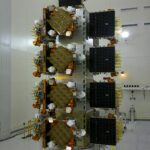
The commander of U.S. Indo-Pacific Command said Thursday he expects the upcoming fiscal year 2022 budget request will include key investments to begin funding a portion of the $27 billion required for the new Pacific Deterrence Initiative (PDI). “I’m encouraged so far by some of the initial investments I’m seeing in the [FY] ‘22 [budget]. And that budget is under review by [Kath Hicks], the deputy secretary of defense. I’m encouraged that she articulated that PDI has got to be…

 By
By 











